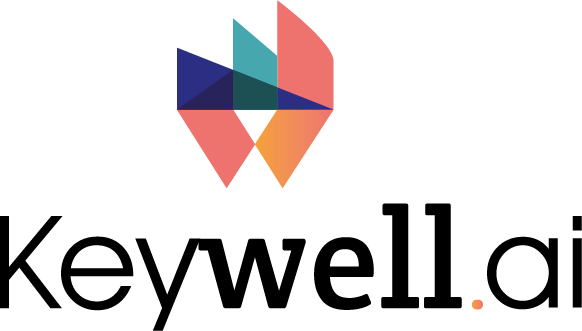Medicaid spending accounts for $1 in every $6 of total US healthcare spending with a collective patient population size of over 90 Million individuals. In total, annual spending for Medicaid recipients is $728 billion (2021)¹. For reference, that’s bigger than the GDP of Poland. Even small gains in efficiency and performance will significantly impact total US spending and care quality.
Aside from the sheer volume, Medicaid program use cases are uniquely situated for AI transformation:
- Every state Medicaid program has different rules and regulations and, providers working across states bear unique administrative burdens that can be addressed with emerging technologies.
- State and federal agencies operating Medicaid fee-for-service (FFS) or overseeing and Managed Care Organizations (MCOs) have unique legislative and public oversight responsibilities as taxpayer-funded and highly-visible programs.
- Medicaid beneficiaries qualify for coverage based on low-income thresholds and disabilities. Medicaid beneficiaries frequently have complex and inter-related social care, transportation, and healthcare needs. In addition, access to care and provider network adequacy is a significant challenge, particularly in rural areas.
- Enterprise systems and IT infrastructure to manage all the different rules and payment methodologies are inflexible and expensive to build and maintain. State and federal procurement requirements make it difficult to dislodge systems integrated into the IT ecosystem. Traditional data governance practices and solutions for programs are resource-intensive and lag behind in usefulness. The potential ROI of emerging AI-first enterprise systems will turn the economics of enterprise IT on its head.
Here are a few examples of areas for AI disruption in Medicaid:
1. Navigating the System: Call Center and Beneficiary Support
Eligibility rules for Medicaid and human services are supremely complex, requiring consideration of cash, assets, and sources of income. Advanced AI digital agents can deeply understand state regulations and the particular needs and scenarios of individuals applying for benefits or redeterminations. Call center representatives and automated chatbots will take a leap forward in helpfulness and efficiency. Improved eligibility management will result in improved access to care and services, increased adherence to eligibility rules, and reduced administrative costs.
2. Patient Access
State regulations increasingly allow for and cover virtual care options such as primary care and behavioral health virtual visits and services. This is particularly important for Medicaid programs, where there are notable gaps in access to care, such as rural maternal² health coverage. Managed Care Organizations (MCOs) administer most Medicaid plans and frequently partner with virtual care providers to reduce emergency room utilization and increase access to care. As these offerings expand, there is potential for AI to augment and supplement patient care services. For example, audio and visual data from patient visits will be captured digitally and can be quickly summarized and labeled, giving healthcare practitioners a high-powered assistant to focus more on patient needs and better serve volume demands.
3. Care Coordination and Social Supports
MCOs and Medicaid agencies frequently pursue care coordination and social assistance programs to provide services such as housing, food assistance, and financial assistance to Medicaid beneficiaries due to the positive correlation between social stability and health outcomes. These services are provided by state agencies and non-profit and religious organizations (each with unique qualifications) and can be difficult to navigate. Care coordination programs may include both clinical components to help guide patients towards evidence-based care protocols and connect them to care providers that may help fulfill social needs. New AI-based technologies can interpret patient information to help care coordinators identify the next best steps and services that would optimize patient care and well-being.
4. Revenue Cycle Management and Audit
For Medicaid fee-for-service programs and state providers, services are billed through healthcare coding systems (i.e., the AMA CPT coding system) which are often manually reviewed by coding specialists and submitted through an iterative and laborious process. There are opportunities to optimize coding and audit on both the provider and payor side for Medicaid providers, MCOs, and FFS agencies. For example, language models can interpret if a visit should be coded with a higher-level code due to visit complexity. On the flipside, it can improve audits by effectively identifying overbilling when the visit or episode doesn’t substantiate the code billed.
5. Managed Care Oversight
Medicaid agencies have unique fiduciary and public responsibilities as a public program administered jointly by federal and state entities, and this is reflected in the unique reporting and oversight requirements for MCOs operating in a state. One area of particular interest is claim denials: state agencies want to ensure that claim denials are appropriate and that appeals are administered promptly.
Payers want to make sure that paid claims comply with coverage policies and that costs are well-managed (on behalf of the state). Payers currently report aggregate information about denials and denial reasons to the state, but these numbers often don’t tell the full story. Emerging AI tools can help navigate, with a new level of precision, the vast information that has to be taken into account to adjudicate denials and appeals. State agencies will likely begin to use these tools to automate audits and identify patterns of noncompliance or provider communication issues. They can also help reduce the significant administrative burdens associated with denials and appeals management.
5. IT Infrastructure
Finally, a bit of longer-term speculation. As AI tools (largely based on open-source technologies) are rapidly decreasing barriers to custom software and platform development and streamlining complex operations, the costs of legacy third-party administrators (MCOs) may begin to outweigh the benefits. As AI-forward platforms develop, we may see a shift back to state-administered programs with the help of advanced platforms and tools. The potential of AI to reduce cost, improve outcomes, and impact Medicaid lives is profound.
Citations:
1. With a collective population size of over 90 Million individuals, $1 in every $6 of US healthcare spending is Medicaid or $728 billion. https://www.kff.org/medicaid/issue-brief/medicaid-financing-the-basics/
2. This is particularly important for Medicaid programs, where there are notable gaps in access to care, such as rural Maternal health coverage. https://www.commonwealthfund.org/publications/2021/sep/restoring-access-maternity-care-rural-america¹
3. Forbes, based on Accenture Survey https://www.forbes.com/sites/joemckendrick/2019/11/18/botch-up-artificial-intelligence-go-out-of-business-executives-fear/?sh=3adca7f55dfa



